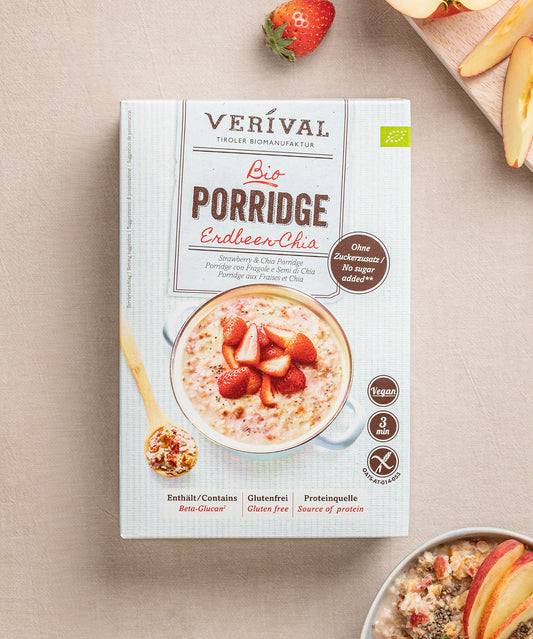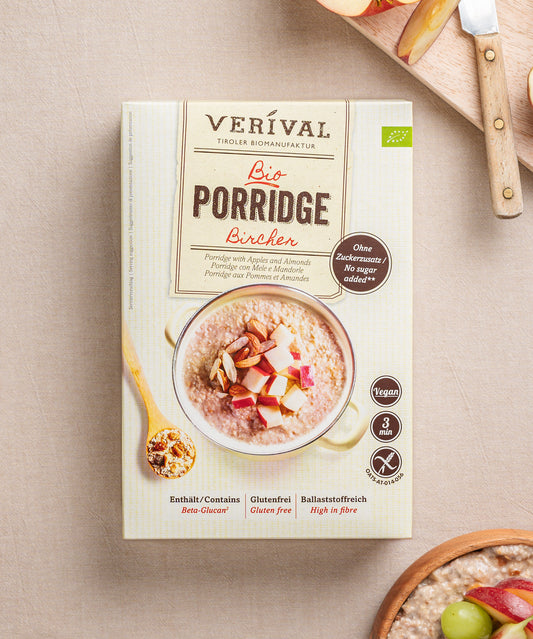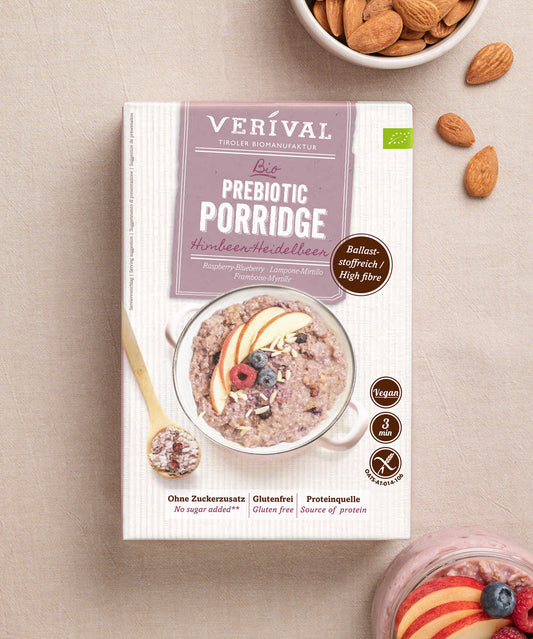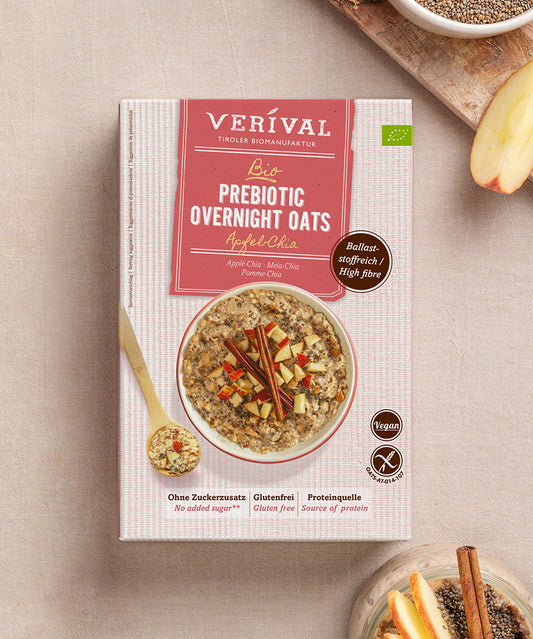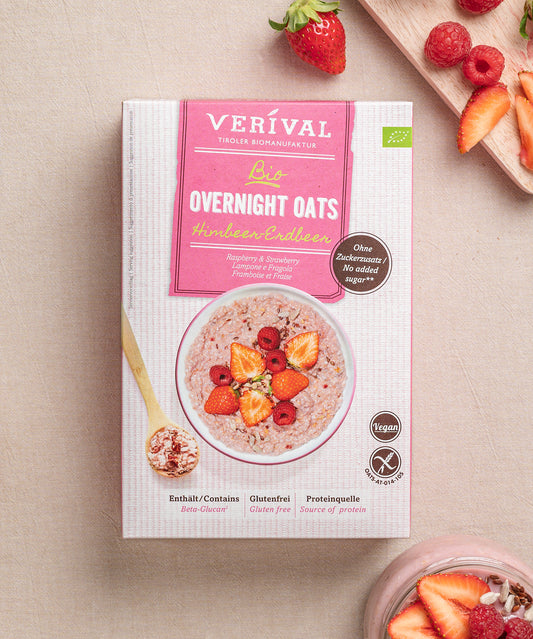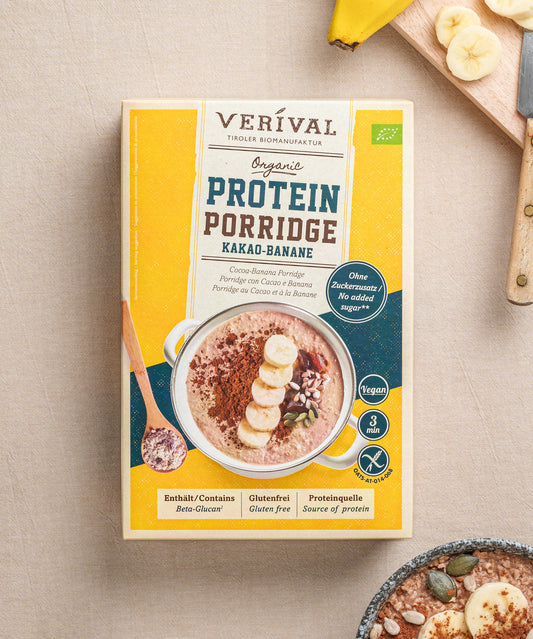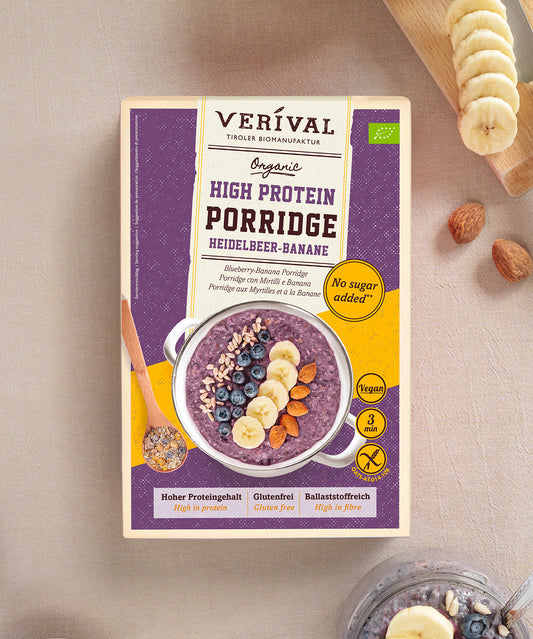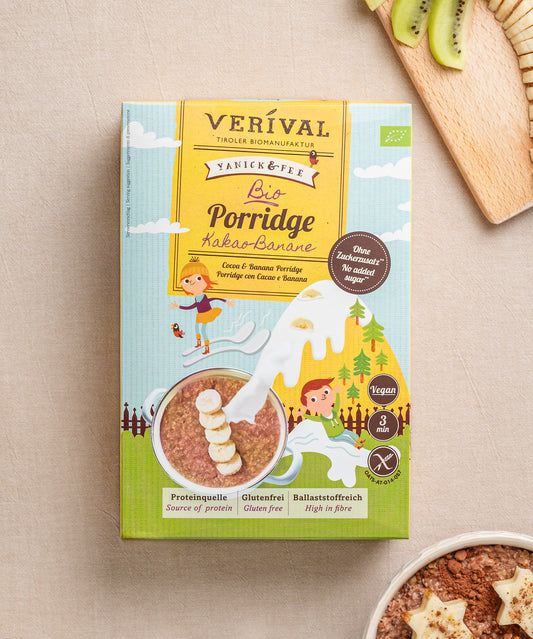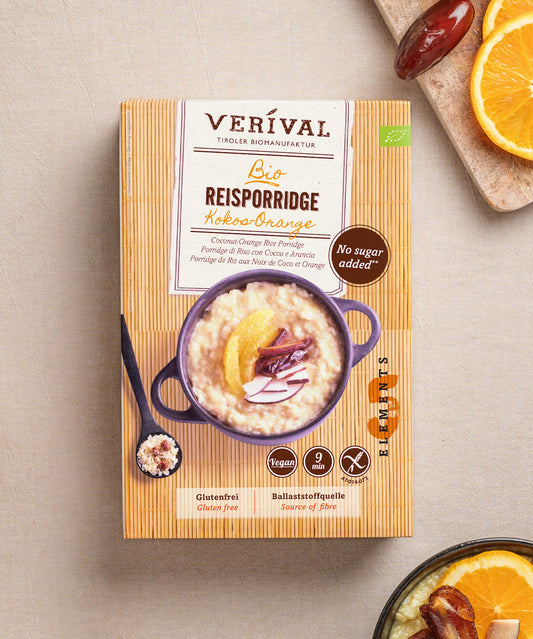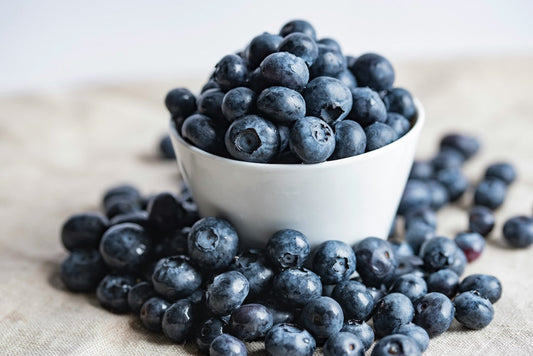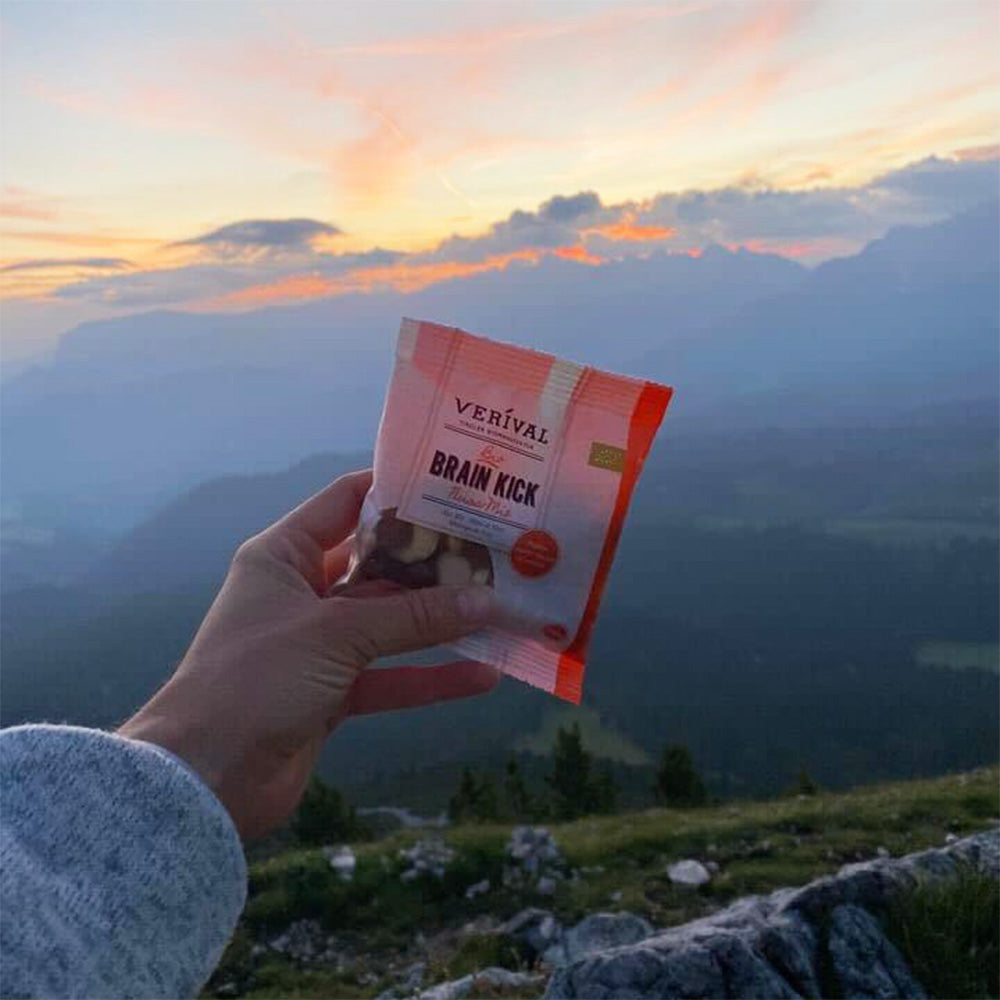Making your own almond milk is easier than you might think! Whether it's for your morning porridge, baking or cooking, making almond milk at home offers a healthy and environmentally friendly alternative to traditional dairy products. So in this blog post, we'll show you how to easily make your own almond milk and why it's such a popular choice among milk alternatives.
Healthy breakfast from VERIVAL
What is almond milk?
Almond milk, a popular milk substitute, is made from shelled almonds and water. The production process is straightforward: almonds are soaked, pureed and then filtered to create a creamy, milk-like liquid. This simple process preserves the natural flavors and nutrients of the almonds, making almond milk not only delicious but also nutritious.
The advantages of homemade almond milk
Making almond milk yourself has many advantages. For one thing, you know exactly what's in your milk – no hidden additives or preservatives. You can also customize the flavor by using more or less almonds or adding natural sweeteners like dates. What's more, you'll be reducing your packaging waste.
Step-by-step guide: making almond milk
Making almond milk at home is a simple process that requires few ingredients but offers plenty of room for creativity. In this section, we will guide you through the basic steps of making your own almond milk and explain why certain steps are particularly important.
One crucial step is soaking the almonds. This process softens the almonds and makes them easier to puree, resulting in a smoother milk. Another important aspect is thoroughly filtering the milk to ensure a fine, creamy texture with no residue. This ensures that the almond milk is pleasant to drink and mixes well with other ingredients in recipes.
After filtration, almond residue often remains, but this doesn't have to go to waste. This residue can be dried and processed into almond flour. This is a gluten-free and protein-rich product that is an excellent ingredient for a variety of baking recipes, including breads, muffins, and pancakes. It is also perfect for thickening sauces and can be used as a breadcrumb substitute. So, not only does making almond milk help you enjoy a delicious and healthy plant-based milk, but it also promotes sustainable kitchen practices by ensuring that all parts of the almond are used.
Making your own almond milk also allows you to fully control and customize the additives, such as sugars, flavors, or preservatives. The result is a fresh, natural, and personalized dairy alternative that you can enjoy in many different recipes.
Storage and shelf life of homemade almond milk
Freshly made almond milk should be stored in the refrigerator and is best consumed within three to four days. Since homemade almond milk contains no preservatives, it does not keep as long as store-bought products. To maintain freshness, store your almond milk in a clean, airtight container and shake well before each use, as natural ingredients may settle.
Nutritional value and health aspects
A look at the nutritional values of homemade almond milk shows that it offers some specific advantages. While it is not particularly high in protein or fiber, it is low in calories and a good source of vitamin E, a powerful antioxidant. When fortified, it can also provide useful amounts of calcium. Here is a detailed nutritional table for almond milk:
| Nutrient | Amount |
| Calories | 30 kcal |
| Protein | 1 g |
| Fat | 2.5 g |
| of which saturated fatty acids | 0.2 g |
| of which unsaturated fatty acids | 2.3 g |
| Carbohydrates | 1 g |
| Dietary fiber | 0.5 g |
Vitamin E: The skin-protecting vitamin
One of the standout nutrients in almond milk is vitamin E. This fat-soluble vitamin acts as a powerful antioxidant, protecting cells from damage caused by free radicals. Vitamin E plays an important role in skin health, helping to keep skin supple and moisturized. A cup of almond milk can provide a significant amount of this vitamin, especially if it is made from a generous amount of almonds.
Magnesium: For muscles and nerves
Almonds are naturally rich in magnesium, a mineral that is important for many bodily functions. Magnesium plays a crucial role in muscle and nerve function, blood pressure regulation, and the building of proteins and DNA. A cup of homemade almond milk typically contains more magnesium than many store-bought varieties because it uses more almonds per quart of water.
Calories and fats: light and healthy
Almond milk has significantly fewer calories than cow's milk. A cup of unsweetened almond milk contains about 30-50 calories, while the same amount of whole milk has about 150 calories. Almond milk is also lower in fat and is primarily composed of monounsaturated fats, which are considered to be beneficial for health. These fats can help lower cholesterol and support the cardiovascular system.
Protein: a small downside
One disadvantage of almond milk is its low protein content. Compared to cow's milk, which provides about 8 grams of protein per cup, almond milk contains only about 1 gram. For people on a high-protein diet, this could be a deciding factor. However, the protein content can be balanced out by adding protein powder or eating protein-rich foods.
Comparison with other milk alternatives
Almond milk is characterized by significantly lower calorie content compared to other plant-based milk alternatives such as soy milk and oat milk. While soy milk is known for its higher protein content and oat milk for its satiating fiber, almond milk offers a low-calorie option that can be a source of calcium when fortified appropriately. Its compatibility, as it is both lactose-free and gluten-free, makes it particularly suitable for people with special dietary needs.
This nutrient profile makes almond milk a practical addition to a variety of recipes, although it cannot serve as a primary source of protein or fiber.
Using almond milk in the kitchen
Almond milk is popular in the kitchen because of its versatility. Its mild, nutty flavor makes it an excellent ingredient for a wide range of recipes. Here are some specific uses:
- Hot drinks: Almond milk is a great choice for coffee and tea. It foams well, making it ideal for cappuccinos or lattes.
- Muesli and porridge: Its slight sweetness and creamy texture goes perfectly with breakfast cereals or porridge, adding a nutty touch.
- Baking: When baking, almond milk can be used as a substitute for cow's milk in most recipes. For example, it is particularly suitable for making vegan cakes, muffins and biscuits.
- Smoothies: In smoothies, almond milk helps to create a smooth consistency without masking the flavor of other ingredients. It goes particularly well with fruits such as berries, bananas, and peaches.
- Savoury dishes: Almond milk can also be used in savoury recipes, for example in sauces or soups. It gives silky texture to cream soups and can be used in place of cow's milk in vegan béchamel sauce.
- Dips and dressings: Its creamy consistency also makes it a good base for dressings and dips. Mixed with herbs and spices, it can provide a light, lactose-free alternative to dairy products in salad dressings and dips.
This versatility makes almond milk a popular choice for people looking for a lactose-free, vegan or simply a lower-calorie milk alternative.
Breakfast recipes with almond milk
When it comes to incorporating almond milk into your morning meals, the options are as creative as you are. Whether it's in smoothies, porridge, or baked goods, almond milk adds a light and healthy component to any recipe. The following recipes show how you can use almond milk in your breakfast:
Conclusion
Homemade almond milk is a healthy and easy alternative to conventional milk and commercial milk alternatives. It allows you to have complete control over the ingredients and adds a fresh and delicious component to your diet. Try it out and discover the variety of almond milk in your kitchen!
Frequently asked questions
How is almond drink made?
Almond drink is made by soaking, puréeing and then filtering almonds. The soaking facilitates puréeing and improves the texture, while the filtering ensures a smooth, creamy liquid with no residue.
How healthy is homemade almond milk?
Homemade almond milk is low in calories and contains healthy unsaturated fatty acids, vitamin E and, if fortified, calcium. However, it is not particularly high in protein and should be consumed as part of a balanced diet.
Which is better, almond milk or oat milk?
Almond milk has fewer calories and less carbohydrates than oat milk, while oat milk offers more fiber and often a higher nutrient content. The choice depends on individual nutritional needs and taste preferences.


